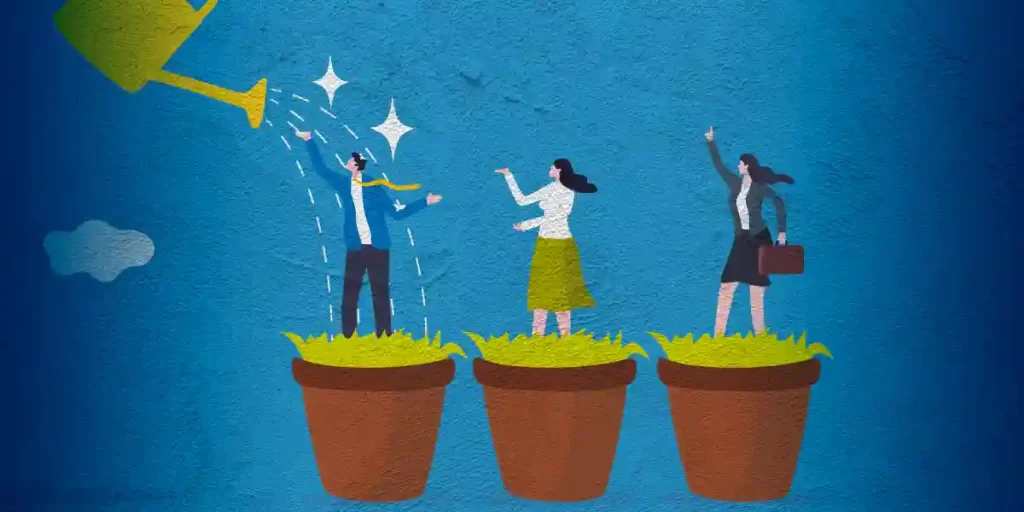
I recently had the incredible pleasure of sitting down with Sabina Nawaz, author of the transformative new book, You Are the Boss: Become the Manager You Want to Be (and Others Need). Sabina isn’t your typical executive coach—her profound insights and direct-yet-compassionate approach have influenced the leadership journeys of executives worldwide. Before launching her own coaching practice, Sabina spent 14 years at Microsoft, transitioning from managing software development teams to advising over 11,000 managers and nearly a thousand executives, including Bill Gates and Steve Ballmer.
Throughout our conversation, Sabina brought forward a rich tapestry of wisdom, sharing powerful tools and stories that speak directly to anyone who’s ever grappled with the pressures of leadership, questioned their own career path, or sought deeper meaning and joy in their work.
Here’s what resonated most deeply with me—and what I believe will transform your leadership as well.
Understanding the Joy Line
One of the most compelling concepts Sabina introduced is the “Joy Line.” At its core, this is a reflective exercise that involves mapping your life’s timeline, pinpointing the moments that genuinely filled you with joy and those that drained you of it.
Sabina discovered that many highly successful leaders feel disconnected from their purpose despite achieving significant professional milestones. She explains:
“After you hit a certain level of success and a certain age, people start feeling shaky. The more successful they are, the shakier they feel, the less confident they feel that they’re living life the way they ought to.”
This realization inspired Sabina to encourage clients—and herself—to reflect on moments of true fulfillment and identify areas for change. It’s a simple yet profound exercise that invites you to consider not just what you’re doing but why you’re doing it.
For Sabina, her personal “joy line” reflection was pivotal. At the peak of her career at Microsoft, aiming for the coveted role of corporate vice president, she experienced an unexpected sense of emptiness. Sabina shared:
“I had this crystal-clear realization that it was no longer a matter of if, but when, I would become a corporate vice president. But then came this crystal-clear moment of complete anticlimax. I knew the formula. It felt really boring. If I know the formula, why spend the next five years chasing something I already know how to do?”
This epiphany ultimately led Sabina to pursue a new path that more closely aligned with her core values: helping people develop and thrive.

Navigating Pressure Versus Power
Another critical theme from our conversation was the difference between power and pressure. Leaders often focus on power, assuming it’s the key to effective management. But Sabina argues that pressure is actually the silent force that can lead even the best-intentioned leaders astray.
She explained how pressure, unlike power, is subtle and insidious:
“Pressure is the silent corrupter. It’s the stress that amplifies negative behaviors and clouds judgment, especially under the microscope of leadership.”
Sabina shared the story of her client Adam, a brilliant leader perceived as sarcastic and critical. Through mindful reflection and recognizing the source of his pressure—rather than simply exercising power—Adam significantly improved his relationships and leadership impact.
It underscores the necessity of self-awareness and intentional practice in leadership, especially at higher organizational levels where pressure becomes increasingly intense.
The Importance of Self-Awareness and Practical Tools
Sabina stresses that true leadership development begins with radical self-awareness. Two powerful tools she offered were the “shut-up muscle” and a practical “mapping exercise.”
1. Strengthening Your “Shut-Up Muscle”
Sabina emphasizes the importance of active listening by literally putting oneself on mute in meetings. By consciously exercising your “shut-up muscle,” you empower others, encourage broader participation, and enhance collective intelligence within your team.
This is especially valuable for leaders prone to dominating discussions unintentionally. Practicing restraint creates an environment where everyone feels heard and respected.
2. The Mapping Exercise: Clarifying Expectations and Behaviors
Sabina’s mapping exercise is another impactful tool. Essentially, it involves documenting your working style—preferences, quirks, strengths, and weaknesses—and sharing this transparently with your team. This process demystifies behaviors that might otherwise lead to confusion or conflict.
The exercise proves especially powerful during transitions, promotions, or team restructuring, when clarity and mutual understanding are crucial.
The Hidden Risks of Promotions
Speaking of promotions, Sabina noted something particularly fascinating: career advancements can paradoxically become the riskiest times for leaders. Traits that brought you success at lower levels—such as being strategic, assertive, or even deeply kind—can be misinterpreted or less valued at higher levels, leading to confusion and misunderstanding.
To address this, Sabina advises slowing down, explaining your approach transparently, and employing the mapping exercise proactively to smooth the transition into higher roles. Intentional transparency becomes your strongest ally during these vulnerable transitions.

Micro-Habits and Mindset Shifts: Less Is More
Perhaps the most counterintuitive and valuable piece of advice Sabina offered was the power of doing less, not more. She insists that modern leadership is not about packing schedules full or working relentlessly but about intentionally creating “blank space”—brief periods of deliberate inactivity or reflection.
Research confirms Sabina’s insight: our most creative solutions often arrive when our minds are not actively working on a problem. As Sabina explains:
“Some of our biggest insights come when our active brain is switched off. It’s exactly what happened with me.”
Sabina recommends a simple daily practice: start by taking just 15 seconds to do nothing, gradually increasing this time. This micro-habit builds a powerful foundation for sustained creativity, clarity, and resilience.
Final Thoughts: You Are Already Enough
Perhaps the most powerful message Sabina imparts is this: as a leader, and as a person, you are intrinsically enough. When you stop striving to prove yourself and begin embracing your inherent worth, leadership transforms from exhausting to fulfilling. You can manage pressure without sacrificing your authenticity.
In Sabina’s own words:
“You are adequate just as you are.”
Embracing this mindset transforms leadership into a joyous, aligned, and deeply meaningful practice.
Thank you, Sabina Nawaz, for your profound insights. Let’s all strive to lead with more joy, self-awareness, and authenticity. After all, we truly are the bosses of our own lives—and that realization is life-changing.









